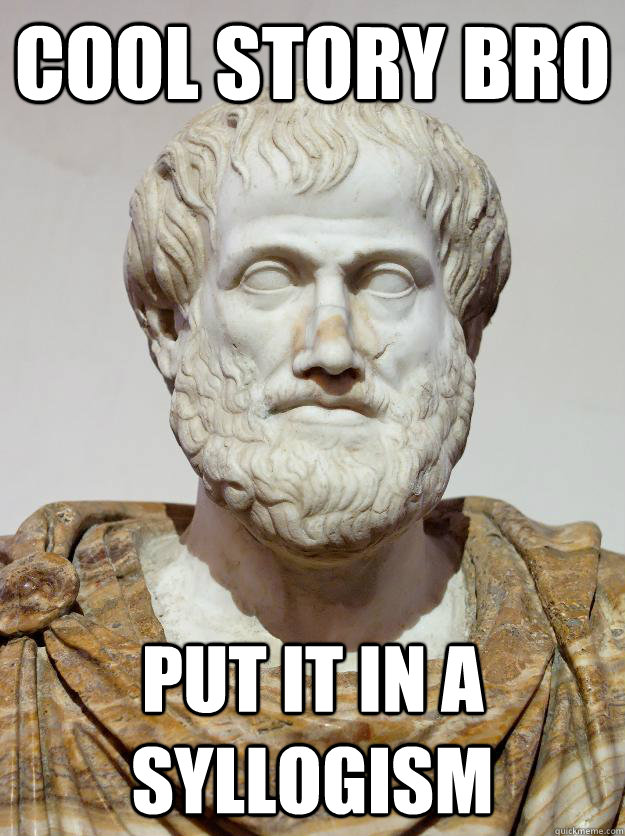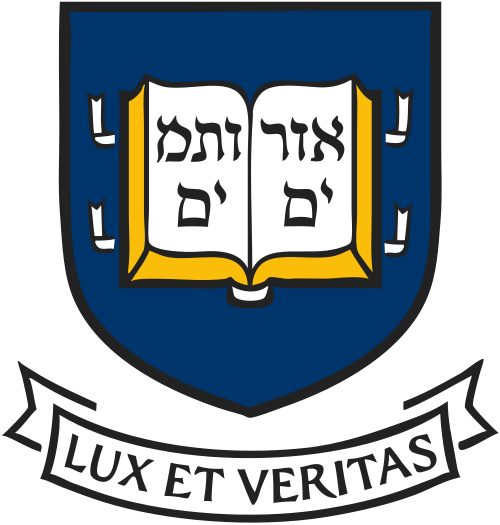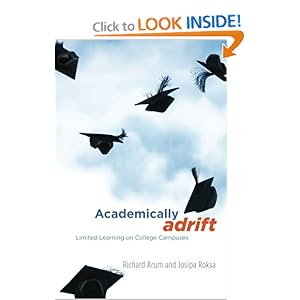Articles on either the decline and fall or the
culture-saving necessity of a Liberal Arts education circulate daily in major
and minor media. Does a degree in the Liberal Arts prepare a student for the
increasingly tough competition for places at top firms, businesses, graduate
schools, and start-ups? Do Liberal Arts majors have a better chance of getting
into med and law schools? Do the Liberal Arts teach skills in short supply? The
list of questions is long: many of them should be asked even before a student
chooses to apply to colleges and universities.
In this first of a long-term rumination on the state of the nation as it applies to Liberal Arts, I want to start by establishing some
definitions and foundations. In subsequent entries I will try to present the
issue in its many complexities and contradictions. I will borrow some of the
great voices who write with a background of recognized success in the
classroom; their experience persuades me to read their words carefully and
slowly, even if I disagree with some of their conclusions. Several have
persuaded me to see things differently—the point, some would say, of a Liberal
Arts education.
Confucius knew, as do most contemporary philosophers, poets,
scientists, and marketing strategists, that the naming of things constitutes
the gift of life. A name brings into being something that was not known in its
specificity and in its place in the world.
But it is also true that names, while they may remain the same, often
describe objects that have changed dramatically over time. In addition, without
shared definitions, people talking across the table today may have little
chance of successful communication and exchange of ideas and views. This is
especially true with what Harvard professor Marjorie Garber calls “loaded
words”—words that are so large and vague they have room to hold lots of contradictory
things: or are simply different things
to different people in the same era.[i]
Since what people mean by the meme ‘Liberal Arts’ differs and often contradicts
what others mean, then ‘action is impossible’ because from the outset people
are speaking different languages. Babel does not promote exchange or
growth. Unless we begin with shared
definitions, communication is doomed.
The last paragraph attempts to use one of the mainstays of
the liberal arts as it was first set forth by Aristotle. The syllogism was just
a tiny part of the common core of knowledge necessary for speaking and
persuading in Athens well over 2000 years ago. And yet something as basic as
syllogistic reasoning is no longer a required part of Liberal Arts today.
Ave atque vale, a phrase from Catullus, would have been
instantly recognizable by anyone studying liberal arts through the 19th
Century in the UK or the US. Donald Kagan, one of the most renowned historians
in the world today, borrows the phrase for the title of his farewell speech
this spring after many years teaching at Yale. His words give an historical
overview of the Liberal Arts, from the beginnings in Greece up through today.
It is the best short overview I have yet seen of the changes the Liberal Arts
have undergone over time. I encourage
anyone interested in the changes in the Liberal Arts to read the full article. Here
is how he describes the current state of Liberal Arts:
In evaluating the performance of major
American universities in meeting the various goals of liberal education sought
over the centuries, I came to conclusions that surprise me. It seems to me that
the education provided at a typical liberal arts college today comes closest to
achieving the goals sought by English gentlemen in the eighteenth century. To
be sure, success in that world did not require any particular set of studies or
any specialization. If it had done so, I am sure the training then would have
contained some equivalent of our modern departmental major. In most other
respects, our curricula today—with their lack of any collection of works or
even subjects studied in common, the absence of agreement on any particular
method of training the mind, the lack of a culminating examination testing the
acquisition of a fixed body of knowledge, the emphasis on well-roundedness
(defined only as the opposite of narrowness and achieved by taking a few
courses in some specified number of different fields)—fit the model nicely. If
we examine the full reality rather than only the formal curriculum, the
similarities seem even greater. I submit that in America today the most
important social distinction, one almost as significant as the old one between
gentle and simple, is whether or not one has a college education. Within the
favored group, finer distinctions place a liberal education, as opposed to a
vocational or merely professional one, at the top of the social pyramid.
Graduates of the better liberal arts colleges are most likely to marry the most
desired partners and hold the best positions and appointments in business,
their professions, and government. That this is true and widely understood is shown
by the fact that each year there are great numbers of applicants for every
place in the freshman classes of such colleges at a cost of perhaps $60,000
each year, a phenomenon otherwise inexplicable. Apart from any pre-professional
training they may obtain, successful applicants gain about the same advantages
as those sought by young Englishmen from their somewhat less formal
eighteenth-century education. They sharpen useful skills in writing and speaking;
they pick up enough of subjects thought interesting in their circle and the
style of discussing them to permit agreeable and acceptable conversation. They
learn the style and manner, political opinions and prejudices to make them
comfortable in a similarly educated society. They have excellent opportunities
to make friends who may be advantageous to them in later life. This education,
of course, is purely secular. There is, moreover, no attempt to shape good
character, for the better universities lead the country in the direction of a
kind of relativism, even nihilism. The message that seems to get through is:
“Do your own thing, and demand that everyone else in the world behave according
to the strictest possible moral code (as it is currently understood in the
halls of the most favored colleges).”
Since Kagan has spent his career teaching students who
attend one of the most elite schools in the world, his observations may well be
an accurate, though sad, portrait.
I do, however, disagree with his assessment in one crucial
way. While I do not think he is wrong about
what may happen at Yale, I do not think he knows how Liberal Arts are in much
worse shape at many other places. He position of teaching the elite has
shielded him from seeing the education in liberal arts students often receive
at schools that are not near the top tier of selectivity, resources, and
faculty. The way liberal arts now exists in most colleges and universities
allows students to pick and choose majors and courses without any core and
without much oversight and, even more importantly, without almost any
inculcation of skills.
In their book “Academically Adrift,” two scholars share
their research on what students have learned after 4 years in college. The data
portrays a world far different than Kagan’s. He at least assumes that student
learn certain skills that will help them move forward into the world of the
elite. For those who go to Yale this may be true, but these perks and skills
don’t seem to trickle down very far in the hierarchy of schools:
- 45
percent of students "did not demonstrate any significant improvement
in learning" during the first two years of college.
- 36
percent of students "did not demonstrate any significant improvement
in learning" over four years of college.
- Those
students who do show improvements tend to show only modest improvements.
Students improved on average only 0.18 standard deviations over the first
two years of college and 0.47 over four years. What this means is that a
student who entered college in the 50th percentile of students in his or
her cohort would move up to the 68th percentile four years later -- but
that's the 68th percentile of a new group of freshmen who haven't
experienced any college learning.
"How much are students actually
learning in contemporary higher education? The answer for many undergraduates,
we have concluded, is not much," write the authors, Richard Arum,
professor of sociology and education at New York University, and Josipa Roksa,
assistant professor of sociology at the University of Virginia. For many undergraduates,
they write, "drifting through college without a clear sense of purpose is
readily apparent." [ii]
Although schools in the top 40 of the US News rankings have
tried to do a great deal of outreach to under-represented minority students it
is only recently that class has become an issue that generates stores in the
press. The percentage of students who qualify for Pell grants and are enrolled
at top schools is still, in some cases, in the single digits. The students
Kagan is teaching and has taught have been from the economic elite. These
students have attended great secondary schools around the world and have had
much exposure to the world. They are, in other words, suited to the 18th
Century form of education in liberal arts. They will take their places in the
world due in part to intelligence, great schools, and great networks.
For those not going to schools like this, the data
demonstrates that while they may be paying huge sums for an education, they may
not be learning much. Should students who attend schools that are not highly
ranked major in liberal arts if the statistics demonstrate that they will leave
with skills little different than what they went in with? At a cost of $60,000
a year, the time may be that schools that charge this much will need to think
about demonstrating that they give students more than just four years of
wonderful gyms, dorms and other facilities. Instead they may need to think
about ensuring that the skills liberal arts instill are in fact taught, tested,
and assessed.
Liberal Arts, for those who are smart and motivated, prepare
these select few for great futures. The students learn to talk, write, and
think critically—those skills in short supply despite the millions of students
graduating from universities around the world. I don’t think there are many
people who have any experience hiring or teaching or would disagree with this
assertion. But the number of students who fall into the category of truly
educated liberal arts students may be far fewer than Kagan and many other
educators think.
In my next entry on the Liberal Arts I will return to Kagan
again, to examine why he felt he could only give his speech as he was leaving
Yale. His words about academic freedom, and the responsibility that comes with
citizenship will be juxtaposed and compared with Jean Jacque Rousseau’s view
that Liberal Arts, in and of themselves, instill a form of mental slavery.
[ii] Excerpted from Inside Higher Education
http://www.insidehighered.com/news/2011/01/18/study_finds_large_numbers_of_college_students_don_t_learn_much






No comments:
Post a Comment